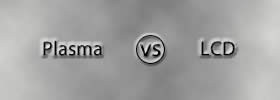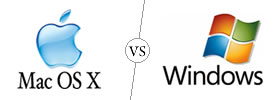Difference between Microwave and Toaster Oven
Key Difference: A microwave oven is a type of oven that uses microwaves to heat up food. Microwaves are a type of electromagnetic wave that is sandwiched between radio wave and infrared radiation on the electromagnetic spectrum. Toaster ovens are ovens that are small electric ovens that have a front door, removable wire rack and removable baking pan.
Ovens are a must have appliance in almost all households. Ovens play an important part in today’s world, they are a necessity. We require ovens in order to cook and feed ourselves. Ovens have been in existence since the invention of fire and have been used for various purposes such as cooking, masonry and forging. With the turn of the century, there have many different types of appliances that have been invented to make lives easier. These new appliances include microwave and the toaster oven. Microwave made it easier for people to heat up foods and cook certain foods in the least amount of time possible, while toaster ovens makes it more efficient to bake and toast small quantities of food in a short amount of time.
 A microwave oven is a type of oven that uses microwaves to heat up food. Microwaves are a type of electromagnetic wave that is sandwiched between radio wave and infrared radiation on the electromagnetic spectrum and their frequencies range between 300 MHz (0.3 GHz) and 300 GHz. An interesting property of microwaves in this frequency is that they are absorbed by water, fats and sugars. However, they are not absorbed by plastic or metal. The microwave ovens run purely on electricity and do not require any additional set-up. It’s sort of plug-and-use equipment.
A microwave oven is a type of oven that uses microwaves to heat up food. Microwaves are a type of electromagnetic wave that is sandwiched between radio wave and infrared radiation on the electromagnetic spectrum and their frequencies range between 300 MHz (0.3 GHz) and 300 GHz. An interesting property of microwaves in this frequency is that they are absorbed by water, fats and sugars. However, they are not absorbed by plastic or metal. The microwave ovens run purely on electricity and do not require any additional set-up. It’s sort of plug-and-use equipment.
The first microwaves were invented following the World War II, using the radar technology that was developed during the war by Percy Spencer. The first microwave was named the ‘Radarange’ and was marketed in 1947 by Raytheon. However, at this time the technology was not yet perfected and the range was too huge to be used in homes and was only available for commercial purchase. It also required massive amounts of electricity to power, making it expensive to use. The modern microwave that we use, known as the countertop microwave’ was first developed in 1967 by the Amana Corporation, which was later acquired by the Raytheon.
Let’s try to simplify how the microwave oven actually works. When the food is place inside the microwave oven, the oven throws microwaves at the food. The microwaves are absorbed by the food, which is then turned into heat. Ever heard that microwaves heat the food from the inside out? Well, that is actually true. The waves that are absorbed by the fat, water and other substances inside the food start heating up the molecules of the food, the heat then travels outward, heating up the rest of the food. Notice, sometimes when frozen food is placed to heat in the microwave and it is not heated for a longer period of time, the inside will be warm, but the outsides are cold. That is because the heat has not yet travelled outside. The microwaves are not absorbed by plastic, glass, ceramic and metal. Metal actually reflects the microwaves; hence the internal lining of the microwave oven is made of metal. However, when you try to heat or cook food in metal pan, it basically just reflects the waves away from the food.
Microwaves are simple and efficient to use as they are portable, do not require any additional set up. They also save a lot of energy by heating up food faster compared to traditional ovens and stoves. They are also cost efficient during set up as well as in the long run. This is why is one of the must have appliance in many kitchens. However, when it comes to doing special cooking work such as baking, roasting or trying to make a crispy crust, microwaves are ineffective. For such, either special equipment such as waxing paper, or oiled pans, etc. must be used to cook these foods effectively or other conventional ovens can be used.
 Toaster ovens are ovens that are small electric ovens that have a front door, removable wire rack and removable baking pan. These ovens are often larger than toasters, but smaller than conventional ovens. Most of these toaster ovens are known as OTG or Oven, Toaster and Griller as it has the ability to perform all three actions. It can be called as a pint-sized, portable oven. It can easily be shifted to any counter or platform and does not require any additional set-up to work. Toaster ovens work on electricity.
Toaster ovens are ovens that are small electric ovens that have a front door, removable wire rack and removable baking pan. These ovens are often larger than toasters, but smaller than conventional ovens. Most of these toaster ovens are known as OTG or Oven, Toaster and Griller as it has the ability to perform all three actions. It can be called as a pint-sized, portable oven. It can easily be shifted to any counter or platform and does not require any additional set-up to work. Toaster ovens work on electricity.
Toaster ovens have various different settings such as toast, bake and broil along with temperature gauge and timer to select the desired temperature and the time. The toaster oven can be used for baking goods such as small cakes, cookies, bread, etc. as well as have a broil setting for roasting meat, fish, eggs, etc. One setback for the toaster oven is that it cannot be used for anything that requires boiling, such as making rice or other food items. Once the food that is placed in the oven is done, the oven will automatically turn off. The person would have to manually open the door and take the food out.
|
|
Microwave |
Toaster Oven |
|
Runs on |
Runs on electricity |
Runs on electricity |
|
Price |
The price of the oven is quite economical. It does not require extra set up charges. |
It is almost in the same range as the microwave. It is a plug-and-use appliance. |
|
Uses |
To heat all types of food and cook certain foods. |
For toasting, baking, broiling foods. |
|
Heating |
Heating is the fastest of all ovens. |
Heating is a bit as the electric coils take time to heat up. |
|
Cooking Time |
Microwave ovens take the least amount of time to heat up food. It can also cook food under 5 minutes. |
Toaster ovens take a little while to cook, similar to conventional ovens. |
|
Economical |
Microwave is very economical. It works on electricity and only consumes power when heating up food. It does not require any additional power. |
Toasters are economical as it works on electricity. It does not consume too much electricity. However, economical ability varies depending on the usage of the device. |
|
Heat distribution |
Microwaves distribute heat more evenly as the food absorbs the microwaves and then turn them into heat. Heating may not be so even in thick, dense objects. |
Toasters do not provide even heat. They do not have a fan to provide even distribution. Toasters have more heat where the coils are. |
|
Temperature Management |
Temperature is managed automatically. However, depending on the make, the microwave may allow the owner to change the temperature. |
Temperature is managed using temperature controls. The heat can be set to desired temperature, depending on what is going to be cooked. |
|
Burners |
No burners are required, only an electrical switch. |
Toaster ovens have electric coils for creating heat. |
|
Benefits |
Microwave ovens are cheap, effective and simple to use. They do not require professional set up, they can be set anywhere on a counter top and plugged in. They also use less power and energy to heat up food. |
Toaster ovens are similar to cheaper and more compact versions of conventional ovens. They are perfect for baking, broiling, roasting and toasting. It is also quite cheap compared to the big conventional oven. |
|
Limitations |
Microwaves are effective for cooking, though they are not effective for creating some kinds of foods. They do not make crispy foods or for baking effectively. |
Toasters can make only limited amount of food (for example, only small cakes can be made as the oven is small); takes time to heat up and cook. It also has uneven heat distribution. Toaster ovens are also unable to make foods such as rice or boiling. |
Image Courtesy: walmart.ca, made-in-china.com









Add new comment